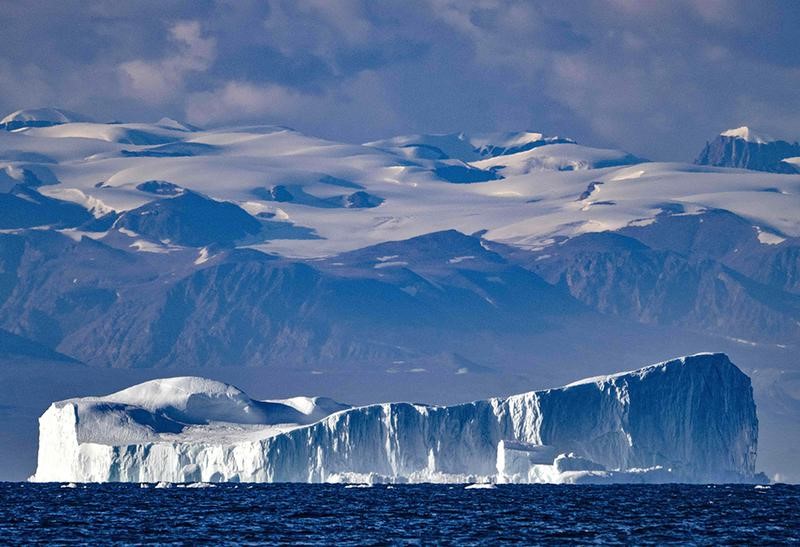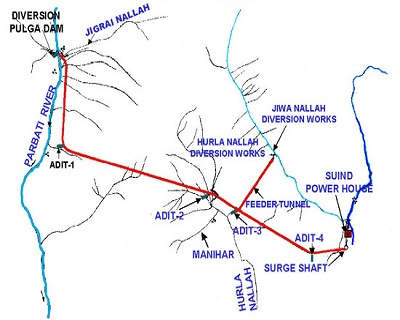Description

Disclaimer: Copyright infringement not intended.
Context
Greenland has lost 20% more ice than previously thought, says study
Context Details
- Climate change has caused Greenland’s ice sheet to lose 20% more ice than previously thought, according to research published recently that used satellite imagery to track the retreat of glaciers over the past four decades.
- Previous studies have found that about 5,000 gigatons of ice has been lost from the surface of the Greenland ice sheet in the past two decades, a major contributor to rising sea levels.
- In the new study, researchers in the United States compiled nearly 2,40,000 satellite images of glacier terminus positions — where glaciers meet the ocean — from 1985 to 2022.
- Nearly every glacier in Greenland has thinned or retreated over the past few decades.
- Over 1,000 gigatons (1 gigaton is equivalent to 1 billion tons), or 20%, of ice around the edges of Greenland had been lost over the past four decades and not been accounted for.
- Because the ice at the island’s edges is already in the water, the authors stressed that this would have had a “minimal” direct impact on sea level rise. But it could herald further overall ice melt, allowing glaciers to more easily slip towards the sea.
Susceptible to change
- Researchers found that the Greenland glaciers most susceptible to seasonal changes ( that is expanding in winter and retreating in summer ) are also the ones most sensitive to the impact of global warming and experienced the most significant retreat since 1985. The melting of Greenland’s vast ice sheet (the world’s second-largest after Antarctica) is estimated to have contributed more than 20% to observed sea level rise since 2002.

Consequences of the ice sheet melting
- Sea Level Rise-The melting of Greenland and Antarctic ice sheets are the largest contributors of global sea level rise.
- Increase in Coastal erosion: The rising sea levels lead to coastal erosion like receding beach area of Maldives, Lakshadweep.
- Storms: The warming of air and ocean temperatures, create more frequent and intense coastal storm surges like hurricanes and typhoons.
- Oceanic circulation-The ice sheet melting in Antarctic and Greenland is changing the oceanic circulation of the Atlantic Ocean like the weakening of Atlantic Meridional Overturning Current(AMOC).
- Effect on coastal wildlife- With the melting of ice sheets, wildlife like walrus are losing their home and polar bears are spending more time on land. This has resulted in higher rates of conflict between people and bears.
- Increased vulnerability of Coastal Regions, including India- Coastal communities face risk of displacement and becoming climate refugees as their lives and livelihoods get threatened due to sea level rise.
Greenland
- Greenland is the world’s largest island located between the Arctic and Atlantic oceans, east of the Canadian Arctic Archipelago. It is an autonomous territory within the Kingdom of Denmark.
- Though physiographically a part of the continent of North America, Greenland has been politically and culturally associated with Europe (specifically Norway and Denmark, the colonial powers).
- The majority of its residents are Inuit, whose ancestors migrated from Alaska through Northern Canada, gradually settling across the island by the 13th century.
- It has three-quarters of its surface covered with a permanent ice sheet, which is increasingly coming under threat because of climate change.

Way forward
- Adhere to Antarctic Treaty and Paris Agreement treaties to preserve the continent’s unique environment and ecosystems. Adequate steps to stop further loss of ice sheets in other parts of Antarctic like the east Antarctic.
|
PRACTICE QUESTIONS
How does the melting of the Arctic ice and glaciers of the Antarctic differently affect the weather patterns and human activities on the Earth? Explain (200 words)
|
















